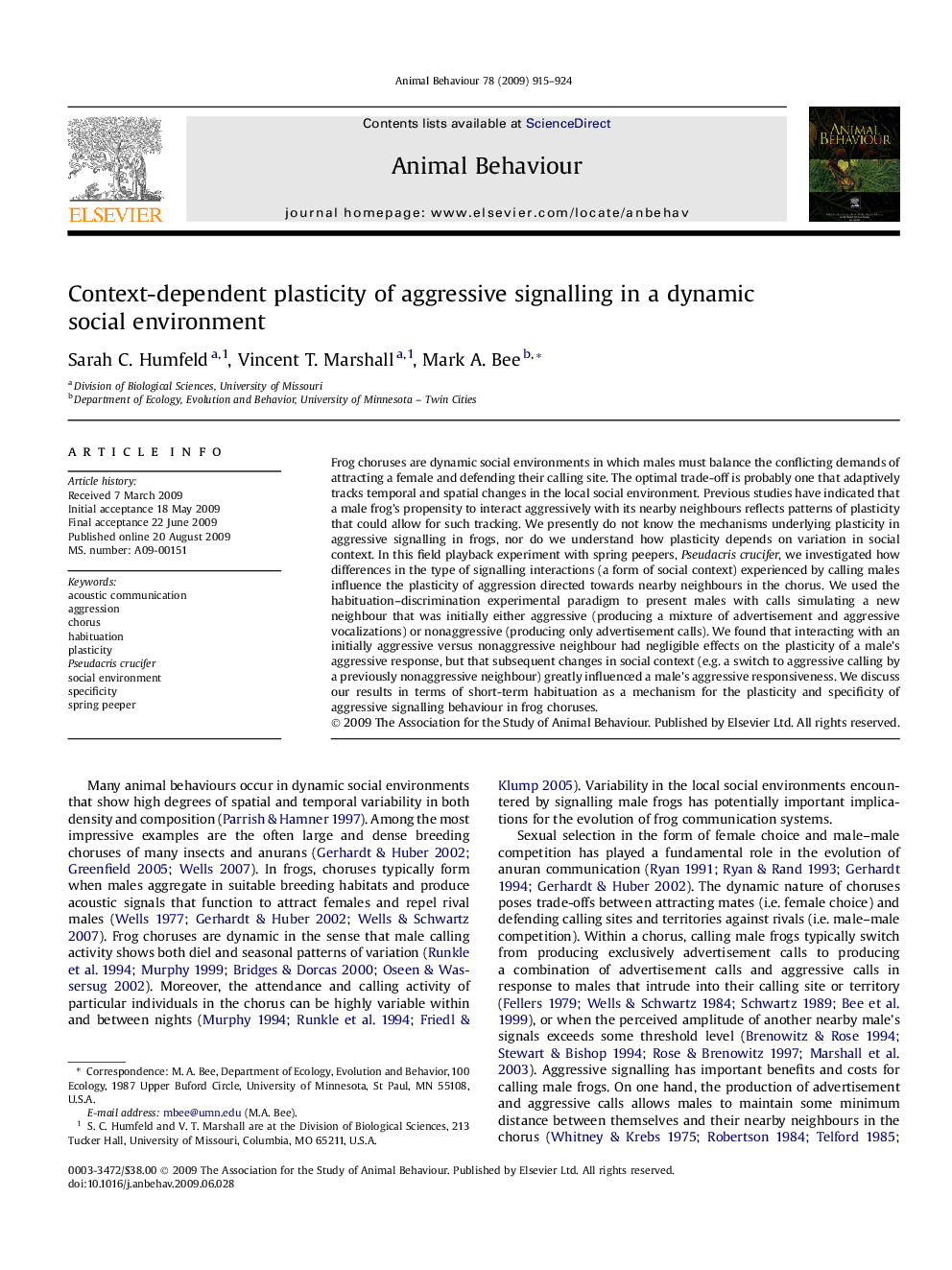| Article ID | Journal | Published Year | Pages | File Type |
|---|---|---|---|---|
| 2417862 | Animal Behaviour | 2009 | 10 Pages |
Frog choruses are dynamic social environments in which males must balance the conflicting demands of attracting a female and defending their calling site. The optimal trade-off is probably one that adaptively tracks temporal and spatial changes in the local social environment. Previous studies have indicated that a male frog's propensity to interact aggressively with its nearby neighbours reflects patterns of plasticity that could allow for such tracking. We presently do not know the mechanisms underlying plasticity in aggressive signalling in frogs, nor do we understand how plasticity depends on variation in social context. In this field playback experiment with spring peepers, Pseudacris crucifer, we investigated how differences in the type of signalling interactions (a form of social context) experienced by calling males influence the plasticity of aggression directed towards nearby neighbours in the chorus. We used the habituation–discrimination experimental paradigm to present males with calls simulating a new neighbour that was initially either aggressive (producing a mixture of advertisement and aggressive vocalizations) or nonaggressive (producing only advertisement calls). We found that interacting with an initially aggressive versus nonaggressive neighbour had negligible effects on the plasticity of a male's aggressive response, but that subsequent changes in social context (e.g. a switch to aggressive calling by a previously nonaggressive neighbour) greatly influenced a male's aggressive responsiveness. We discuss our results in terms of short-term habituation as a mechanism for the plasticity and specificity of aggressive signalling behaviour in frog choruses.
